
Issue 90.02 · April 8, 2024 · 22westmedia.com
ENVIRONMENT ISSUE
THE
CONTRIBUTORS
Darya Jafarinejad, Writer
Cooper Jones, Writer & Artist
J. Quinzelle, Writer
Samantha Rosario, Writer
Eric Ceja Ruiz, Writer
Isabella Siquiera, Writer
Caroline Smith, Writer
Jesica Wells, Writer
Krizzha Dee, Artist
Jo Lin, Artist
Serena Logan, Artist
Leyna Nguyen, Artist
Samuel Olvera, Artist
Abihail Ortega, Artist
Adrian, Photographer
2
Want to Contribute? Join the Magazine Discord Server!
copyeditor@22westmedia.com
Tulasi Napolitani Distribution Manager distributionmanager@22westmedia.com
Panhavatey Bun Advertising and Sales Manager advertisingmanager@22westmedia.com
Payton Smith Advertising Associate advertisingassociate@22westmedia.com
COVER DESIGN
Leyna Nguyen, Illustrator https://leynatlnguyen.weebly.com @leyna.artcorner
CONTACT US
Email: info@22westmedia.com
Mail: 1212 Bellflower Blvd, Suite 108 Long Beach, CA 90815
LETTER FROM AN EDITOR
Happy April everyone! One of my favorite months of the year, and not just because it’s my birth month.

April always feels like a time of rebirth to me. The stress of March midterms is over and the doom-and-gloom skies have passed. The sun here at CSULB is finally shining again, the trees are swaying in the wind, and the flowers are blooming. The world is right again, just in time for Earth Day on the 22nd.
Inspired by Earth Day itself, we present to you: THE ENVIRONMENTAL ISSUE! This month’s issue of the magazine is all about our planet, and we have some great articles for you. Everything from a Mean Girls take on microplastics, sustainability initiatives happening on campus, a poem about Mother Earth’s love, and even a lazy gardener’s guide to appreciating the nature here in Long Beach. It’s a pretty great issue, if I do say so myself.
I want to say thanks to all of our contributors who felt passionate enough about our world to write about it this month, and thanks to everyone who was curious enough to pick up this issue and open it.
If you ever feel that passion for anything and want to write about it, come stop by the 22 West Media office on the first floor of the USU! We would love to have you volunteer for our magazine.
Now, once you’re done flipping through this issue and seeing all the amazing work our writers and artists have done, do me a favor: go outside, stand in the sun, take a deep breath, and appreciate the earth!
3 ENVIRONMENTAL ISSUE 90.02 GIA KRUPENS MANAGING EDITOR
Disclaimer and Publication Information: 22 West Magazine is published using ad money and partial funding provided by the Associated Students, Inc. All Editorials are the opinions of their individual authors, not the magazine, ASI nor LBSU. All students are welcome and encouraged to be
part of the staff. All letters to the editor will be considered for publication.
students will have
Please include name and major for all submissions. They are subject to editing and will not be returned. Letters may or may not be edited for grammar, spelling, punctuation, and length. 22 West Magazine will publish anonymous letters, articles, editorials, and illustrations, but must have your name and information attached for our records. Letters to the editor should be
longer than 500 words. 22 West Magazine assumes
responsibility,
is it liable, for claims
its advertisers.
are available in the Associated Students business office. MAGAZINE STAFF
Editor
a
However, LBSU
precedence.
no
no
nor
of
Grievance procedures
Jensen Puckett Editor-in-Chief editorinchief@22westmedia.com Gia Krupens Managing
managingeditor@22westmedia.com Caroline Bae Art Director artdirector@22westmedia.com
Editor
Alana Loinaz Lead Copy
WHERE THERE’S WATER, THERE’S LIFE
Local Sustainability Initiatives
WRITTEN BY ISABELLA SIQUIERA ILLUSTRATION BY JO LIN
Each year, Earth Day commemorates environmental programs and initiatives that have helped promote sustainable methods to protect the planet. One Tree Planted, World Wildlife Fund, Blue Sphere Foundation, and Greenpeace are all organizations that have led to a more sustainable life. However, there are smaller and local organizations that have also made contributions. Founded here on campus, the Water Resources Student Association is dedicated to promoting and educating about water conservation methods in the local region of Orange and L.A. County.
The club is run by four officers: Marelin Go, Robin Nakashita, Alex Roubanis, and Angie Martinez.
Meetings are held every Thursday in room 202 at the Vivian Engineering Center from 2-3 p.m. While the club’s main objective is to promote the importance of water conservation and preservation, it also focuses on other topics.
“Hearing from different students gives us ideas to help solve problems,”

Fostering a welcoming environment for students of all backgrounds, not just STEM majors is important to the officers. “Hearing from different students gives us ideas to help solve problems,” said the club’s treasurer, Alex Roubanis. Though niche, the process of water conservation involves several different working hands, not just those of an engineer.
WRSA not only promotes the importance of water conservation but also educates members about it. Recently, the board intro-

duced their six-part Orange County Water Series in which they break the process down. Each step in the process has its own slideshow presentation, and the sections are as follows: Wastewater Collection in Orange County, Wastewater Treatment at OC San, Wastewater and Biosolid Applications, Water Treatment at OCWD, Emerging Contaminants, Tap Water in Orange County. By including graphics and explanations of processes, the water conservation cycle in a local setting is illustrated to help students learn. “It’s about community and learning,” said the club’s vice president, Robin Nakashita. Additionally, the club is interested in helping
4 22 WEST MAGAZINE FEATURE
students connect with professionals. The officers intend to do this by hosting guest speakers, talking about the officers’ own internship experiences within the regions of Orange and L.A., and having field trips.
“The club is still in its founding stage,” said Roubanis. The board is in the process of figuring out logistics, such as tuning the Club Constitution and trying to gain more participation as it is still new.
However, the club has been very active in recent months, participating in activities other than their weekly meetings. Members participated in a hike at the Bolsa Chica Ecological Reserve on February 3 this year. The club also intends to participate in the Green Generation Showcase taking place this month. It will be hosted at the Earl Burns Miller Japanese Garden on April 18 from 4-7 p.m. “We will be there to table and spread our mission,” said the club’s secretary, Angie Martinez.
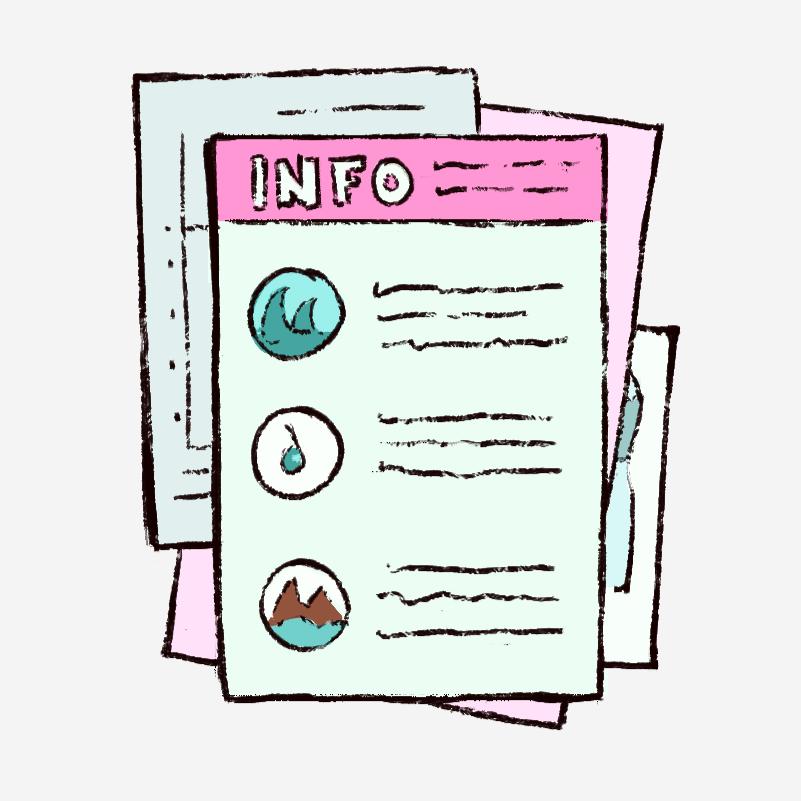

Through this event, the club intends to gain more participation and network with other organizations on campus. “We want to collaborate with other sustainability groups, who share similar goals, to help us expand our club,” said Nakashita.
“WRSA not only promotes the importance of water conservation but also educates members about it.”

5 ENVIRONMENTAL ISSUE 90.02
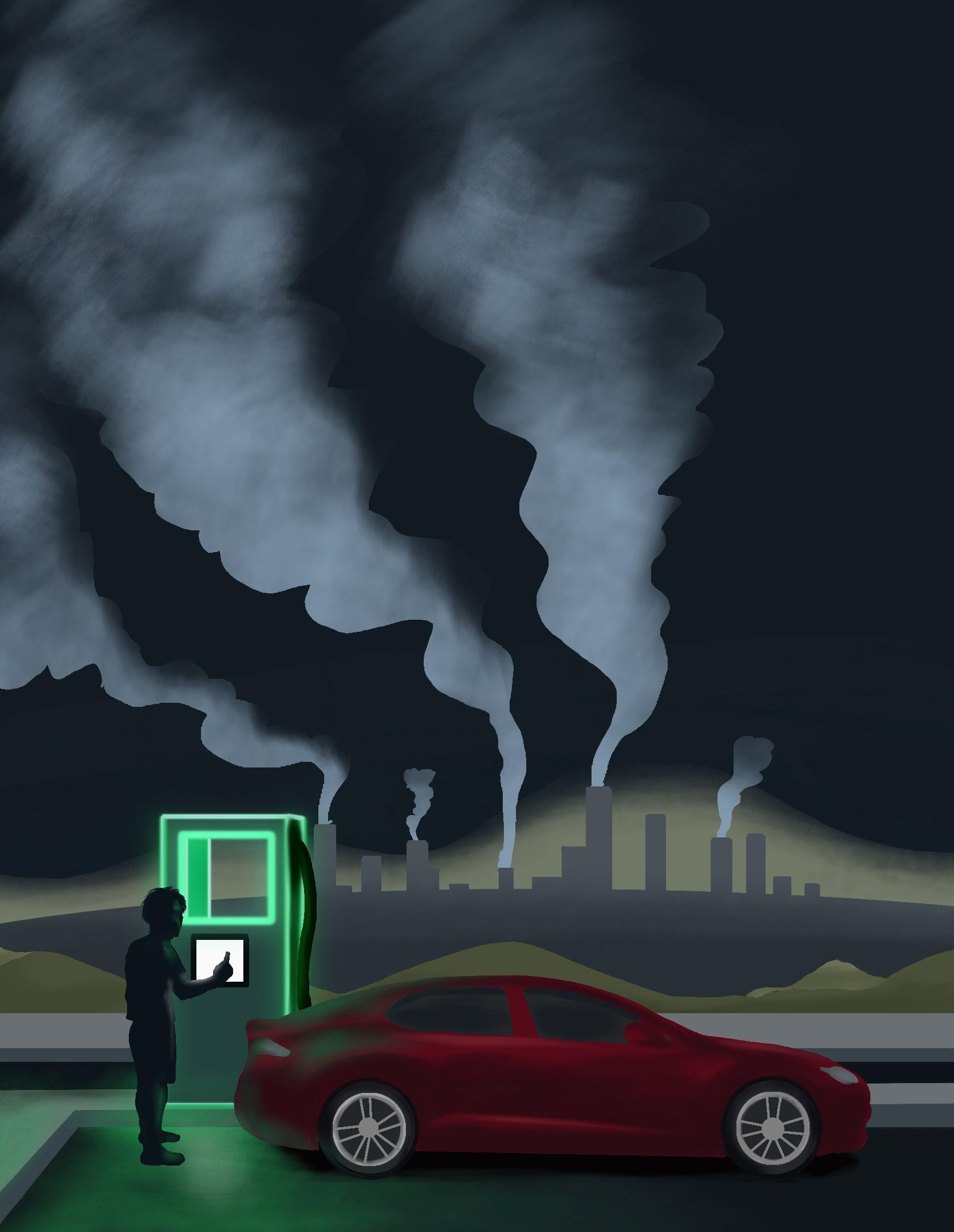
HARM OF ELECTRIC CARS CARS
WRITTEN BY COOPER JONES
ILLUSTRATION
BY LEYNA NGUYEN
6 22 WEST MAGAZINE CULTURE
Upon learning about the lessthan-ideal life cycle of the car batteries used, I’ve realized we still have a long way to go before we can call this phenomenon “eco-friendly.”
Recently, the fascination with electric cars has been sweeping the nation, and this trend shows no signs of slowing down anytime soon. According to the Department of Energy, 2.5 million fully electric cars are currently on the roads, and it’s projected that this number will increase 100-fold, to nearly 10% of all lightduty vehicles by 2030. Though this seems like a big stride in the global warming crisis of the last few decades, there are in fact environmental consequences that are often overlooked by the general public.
Though the inception of the electric car dates all the way back to the late 19th century, this concept really started to take off in the late 2000s when car manufacturers like Nissan, Toyota, and most notably Tesla began developing their own take on the electric car. According to Tesla’s co-founder Elon Musk, “Electric cars are not only more efficient, but they’re also better for the environment,” a common understanding of electric car supporters. This sentiment has its validity, with electric being 2.6 - 4.8 times more efficient than gasoline internal combustion engines. Electric vehicles, however, are far from a perfect solution to today’s fossil fuel crisis.
Most of the batteries in modern-day electric cars are what is known as lithium ion batteries, meaning they are produced by primarily mining materials in two distinct methods, open pit mining as well as brine extraction. Both techniques can be devastating to the vegetation and wildlife of the surrounding area.
In the brine extraction process of mining for lithium, after draining the natural water supply, sulfuric acid and sodium hydroxide need to be injected into the soil and water. This process directly poisons and often kills the wildlife adjacent to the dig site, and it also releases a great deal of CO2. In fact, according to the Wall Street Journal, “40% of the total climate impact caused by the production of lithium-ion batteries comes from the mining process itself,” making it clear that this process needs to be further developed before it really can be as sustainable as many think it is.
The other, and arguably more devastating, method of lithium mining is open-pit mining in which local vegetation is cleared away before drilling a deep pit into the ground. Mining in this way directly disturbs the native wildlife by physically
displacing it and creating toxicity in the local water and soil generating a high concentration of heavy metals. According to a 2016 BBC article, approximately 25,000 migrating geese landed in the contaminated waters of an open pit mining site in Montana. Since then, geese have been reported to be dropping dead in the area, demonstrating how even a single open pit site can potentially harm a species or even an entire ecosystem.
Another drawback to the production of the batteries is the sheer amount of water required to create this battery. Like many other productions, the production of these batteries takes a massive quantity of water to create just a single item. In fact, it takes about 1,250 gallons of water to make a single lithium-ion battery. This is primarily due to the brine mixture used in the brine extraction process; of course, this production can’t possibly be considered eco-friendly until this hindrance is resolved or at the very least significantly reduced. Besides production, the ineffective disposal of these car batteries is another often overlooked consequence of electric vehicles. According to greencars.com, while approximately 90% of gasoline-powered car batteries can be recycled, this number is just about 5% of the lithium-ion batteries present in electric cars. These batteries are considered to be electronic waste and as such are extremely difficult to dispose of effectively. While it’s recommended that electronic waste should be professionally disassembled, because of the time, money, and effort required for this, it’s typically not the case. As a result, the majority of the car batteries simply end up in commercial landfills which can have a whole host of issues the biggest of which are hard-to-contain electrical fires.
Like most, I’ve always wholeheartedly assumed that electric cars are the future of the transportation industry until very recently. Upon learning about the less-than-ideal life cycle of the car batteries used, I’ve realized we still have a long way to go before we can call this phenomenon “eco-friendly.” While it’s clear that fully electric cars have their place in society, they’re not perfect yet. Of course, electric cars are vastly superior to their gas-powered counterparts, but until car companies like Tesla can either perfect or replace the current battery design, it’s clear that this will never be a sustainable solution for the transportation industry’s role in climate change.
7 ENVIRONMENTAL ISSUE 90.02
MEET THE PLASTICS
WRITTEN
BY JESICA WELLS
In the name of all that is holy, would you look at the biggest contributors to landfill?
Of course, the plastics are on the list! Who are the plastics?
They’re waste royalty. If pollution was covered by TMZ, they’d always be on the cover.
There are so many of them, I mean, we have been making them since the 1800s. But what makes plastic plastic? It’s a material made of polymers that can be characterized by being flexible, lightweight, and inexpensive to produce. What are polymers? In short, it’s a large molecule often found in many things, though synthetic polymers are what make plastics. In 1933 plastic as we know it changed when Polyethylene (PE) came onto the scene. PE was so inspiring when it was first being produced, so much so that it is still used. Plastics themselves have become a double-edged necessity. What makes the plastics unique is that they decompose in a way that is natural. Heat and wind can break them down, but they don’t compost. The issue lies in consumption, as some plastics were meant for single use and can take up to a century to break down. This is a real issue since plastics as we know it have only existed for less than one hundred years. The best we can do for our homes is to recycle and use alternatives to keep our plastic waste manageable.
That one there is HDPE and her twin sister LDPE, they are the most basic girls you will ever meet. Every time I go to the grocery store, they’re there.
HDPE and LDPE, also known as high-density polyethylene and low-density polyethylene respectively, are the most common types of plastics. HDPE is most often seen in milk jugs, water bottles, recycling bins, and children’s toys. You can spot it by its appearance as it is often rigid, and opaque.
ILLUSTRATION
BY COOPER JONES
Its sister plastic, LDPE, appears in thin wraps and garbage bags. LDPE has low-temperature flex and is not suited for things that require toughness. Both are tough and wear-resistant, making them easy and ideal to use for everyday goods such as the ones mentioned. They luckily can often be recycled and remolded into something else, making them one of the lesser evils of plastics. In the state of California, both are recyclable, but it is still good to cut down on waste through reusable containers. And while some reusable supplies may be made from plastics, being multi-use goes a long way over being single-use.
The other one? That’s Polyester. Her dad is PET. She knows everything about everyone. That’s why she’s in all your clothes.
Polyester is everywhere. It’s become one of the most used fabrics in recent years, with it nowbeing in 70% of clothing items. While it may not seem like plastic on the surface, it most certainly is. Polyester is made from melted-down polyethylene terephthalate (PET) which is used to make threads that are spun into fibers after it’s hardened through melt spinning. Due to it being plastic, it is cheap to make and is mass-produced. While it isn’t the first fabric made from plastic, it is the most popular today because of the influence of fast fashion. For some context, fast fashion consists of clothes that go in and out of trend, and it’s made fast and cheap. Fast fashion is often unethical and contributes to a large majority of clothing waste. Some ways to avoid fast fashion are through ethical shopping, thrifting, hand-me-downs, trading, and more. Though of course, fast fashion is not the sole responsibility of the consumer but instead the corporations. But consumers have power over where they spend their money. When looking for a piece of clothing with
desired longevity, consider ethically purchasing if that is an option. Textile recycling only happens at certain locations, so it is important to know where this resource is available closest to you. Keep in mind, while polyester and cotton can both be recycled, if an article of clothes is made with a mix of both it can be much harder to recycle. So always check those tags and think twice before buying.
And evil takes a human form in Microplastics. Don’t be fooled because she may seem like your typical harmful invasive plastic, but in reality, she’s so much more than that. She is the queen bee. The star. The other two are just her workers. How do I even begin to describe Microplastics?
Microplastics are where you least expect it. In the most basic terms, microplastics are broken down from other larger plastics, and due to plastic’s inability to compost, they are broken down by weather and time. After larger plastics are made into microplastics through wind and heat, they travel and get back into the ecosystem. One of their most popular resting places is the ocean. There are trillions of microplastics in our oceans, and since they are too small for us to see, they are also too small for animals to see as they are anywhere from 5mm to .0001 micrometers long. This confuses animals into eating them, and when we consume the animals, we consume the microplastics. This isn’t the only way for humans to ingest microplastics. Foods wrapped in plastics can release microplastics once heated up in a microwave, thus making their way into the food. In this sense, they are almost unavoidable. The best we can do for ourselves and each other is to recycle to prevent the first type of microplastic from entering our ecosystem.
8 22 WEST MAGAZINE CULTURE
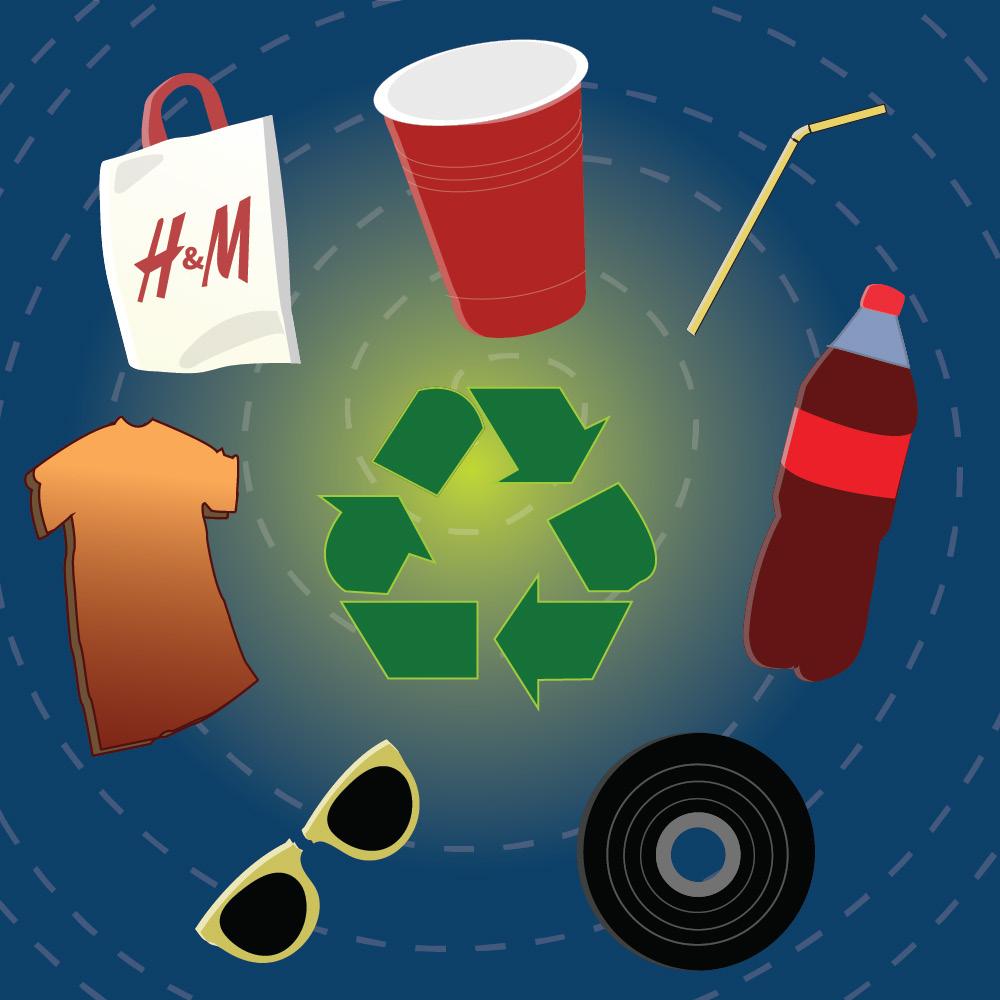
9 ENVIRONMENTAL ISSUE 90.02

10 22 WEST MAGAZINE OPINION
CAN YOU SEE THE MOUNTAINS? NEITHER CAN I.
WRITTEN BY DARYA JAFARINEJAD
Environmental justice is human justice. Like the green from the plant or the skin from our bones, they cannot be divorced. It is impossible to have one without the other. What affects the mother affects the children.
I encourage you, the reader, to go outside. Take a walk. Breathe in that beautiful corrupted air. Allow the aromas of gasses, smog, lead, sulfur, and carbon monoxide to root themselves firmly in your lungs—an invasive species in the habitat of your body. Feel the bleaching of your bones. Observe as the color inside you—the pink of your organs, the red blood cells, the visual affirmation of life— slowly decays, surrendering to the valleys of ash that strangle you.
Drink some water. I particularly love the new flavors, such as “Tropical Oil Spill,” “Punch-tastic Plastic,” and “Sparkling Hazardous Waste.” My teeth have that glossy, stained look I’ve never wanted, and I think my voice is dying from the acid in my throat. It’s okay. I can just text from now on. It’s okay.
Another animal went extinct. It used to make international headlines. Now it’s a blurb. Habitat loss due to deforestation and climate change are the two main factors of animal endangerment. Yet, when I search up what kills animals the most, I receive countless websites about which animals kill us. It seems the mirror was too ugly, and so we built freeways and skyscrapers that glimmer so brightly, that I am blinded to the blood trapped under the concrete. I am blinded to the endless lines of unhoused populations that lost their homes
ILLUSTRATION BY KRIZZHA DEE
because of capitalist greed. The fallen forests and glorious gentrification are rendered invisible. Out of sight, out of mind.
But I am heating up. I look at my skin and I see a wax candle. I am melting. I look up and I see myself a thousand times. A melting community, a melting population, a melting nation, a melting world. Time is running out. Someone stop this. Someone stop
“Another animal went extinct. It used to make international headlines. Now it’s a blurb.”
it. Someone stop it before we are all spilled wax. A blight on the gentrified neighborhoods, scorned by the rich. Something to be cleaned up and disposed of. Never thought of again.
Maybe if I was oil I would be valued more. Perhaps I already am. A child of immigrants, the epitome of the American Dream, I am something to be exploited to serve the interests of the Corporatocracy until I have dried up. My labor is my designated purpose, like the oil that works for the state. But what happens when my hands can move no more? What happens when all the oil is gone? Is our blood sufficient replacement?
I see stumps, not trees. Red roses have shriveled and died because of the droughts. I don’t see
them bloom for anyone without money. I think to myself, what a colorless world. I see skies of smoke, and clouds of charcoal. The colors of the rainbow, long gone from the sky. I think to myself, what an industrialized world.
Has anyone checked in with Mother Earth recently? She must feel tired from all her forced labor, from all she has had violently stolen and ravaged from her. It must be painful having those machines dig deep inside of you and extract the marrow from your bones. It must be agonizing, being used by men whose only objective is to undress you from your colorful clothes, endlessly laboring for their benefit, and having all your sacrifices ignored. Only to be discarded when you are no longer of use to them. They have stolen her youth, her beauty, and her body. And they are handsomely rewarded for it. When their sons grow up, they will continue the cycle.
How many tears can she cry before she is heard? She sobs tsunamis, screams in earthquakes, rages in hurricanes, and wails wildfires. I wonder even after she has died, whether we will hear her silence.
I saw an interesting video recently. A man walked up a hill and filmed a desolate desert that stretched onto a terrifying, gray infinity. This area had been the site of much oil drilling. He asked the viewers, “Can you see the mountains?” He paused, then answered his own question. “Neither can I.”
Our earth is disappearing, and soon, we will too. If she cannot live, neither can we.
11 ENVIRONMENTAL ISSUE 90.02
A LAZY GARDENER’S GUIDE
FOR MENDING YOUR RELATIONSHIP WITH NATURE

WRITTEN BY CAROLINE SMITH ILLUSTRATION BY ABIHAIL ORTEGA
12 22 WEST MAGAZINE OPINION
After a long day of classes and work, I come back to my room and I’m greeted by my shriveled-up, dying succulents. In their cute little animal-shaped pots, they decay and lay limp. They grow mold instead of new leaves. Their stalks are squishy. Unfortunately, I am guilty of their misfortune. I’ve tried to save them. More water, less water. More sun, less sun. No matter what I do, they insist on dying out.
I used to be pretty good at this. Growing so many sprouts that I could grow new sprouts from those sprouts. Some were growing so big I didn’t know what to do with them. Once my whole desk was lined with a zoo of funny-shaped pots. One by one, they died off.
That’s when I bring them back to my mother so she can revive them. My mom loves her garden. Her home in the spring explodes with calla lilies, rosemary, freesias, and roses. There are two orange trees that are heavy with fruit and tall Italian cypress trees shade the yard. It seems so easy and obvious to her.
At home, she’ll take my corpses of plants. Empty the pots of their wounded soil and put a new succulent in it, the happy pot rejuvenated with life. Little desert roses, plump with stored water. I’ll take it back with me, hopeful for the new plant, but its death is still inevitable. Forced to stay inside and watch me as I reply to another discussion board. I get a weird feeling when I am at school for too long. Like the rest of the world doesn’t exist anymore. It’s just sleep, class, classwork, work, homework, and sleep. Busy when I wake up and busy until I fall
asleep again. Who would have time to tend to a tiny cactus?
When I get into that spiral, I force myself to take a walk around the neighborhood. I just feel disconnected from nature like never before. That’s the thing though, Long Beach is a pretty place. I mean, it’s no sprawling wilderness with forests and hills. It’s still a suburbia stuffed into a city. But when you look for it, it can be a place of natural beauty. Houses can have well-kept gardens of fruit and flowers. Apartment balconies can have a tumbling cascade
“Just because you live in one of the most densely populated places in California doesn’t mean that you exist out of the natural mesh that connects our world.”
of Monstera and Pothos. Parks of towering oaks and eucalyptus.
Long Beach also has a rich native plant group. Because most of the area is historically wetland and chaparral, you get some pretty adaptable plants. Buckwheat, Toyon, and Coyote Brush can grow pretty well and pretty big with relatively low maintenance. Californian Oak trees are the most resilient plants out there, surviving wildfires and still dropping acorns the next season.
But it’s not all bushes and brushes, there are some really lovely native flora that you’ll start to see bloom this spring. California Poppies, of course, can grow about anywhere and you cannot miss their traffic-cone-orange hue. California Sagebrush, also known as Cowboy Cologne, smells great when you get close enough. Purple Sage also smells great, sprouting small purple flowers. Bush Sunflowers, along with a bouquet of other colorful buds are also native to this area.

Just because you live in one of the most densely populated places in California doesn’t mean that you exist out of the natural mesh that connects our world. My lowest lows are when I try to cut myself off from it. When I stop looking up at the clouds and my eyes burn from staring at a screen. Once I actually start going outside and enjoying it, my mood shoots up.
I think quarantine kind of broke everyone’s bonds with the outside world. Being inside that much was detrimental for everyone. Now, four years since the start, we have to rebuild our bonds with the Earth. Slowly, but surely. Walk in the sun. Go to the beach. Lay down in the grass. Play a sport. Breathe in some fresh air. Plant some seeds.
I did that last part finally. Now, there are flowers in purples, oranges, greens, and yellows adorning my front door. They are not dying off anytime soon. The native plants were made to live here. Bees and butterflies floating around them. It feels good to see them grow. It also just feels good being outside long enough to remember that I’m just as much a part of that natural world as they are.
ENVIRONMENTAL ISSUE 90.02 13 ENVIRONMENT ISSUE 90.02

Oa tip from a stoner
WRITTEN BY SAMANTHA ROSARIO
ILLUSTRATION
BY SAMUEL OLVERA
kay, so here’s the deal. I just smoked a fresh bowl and I am standing in my room with nothing to do. I figured that to solve this issue, I’d start writing shit to do when you’re high. I have had good and bad highs, so I’ve figured out what to do and most importantly what not to do. Some have ended in me laughing my ass off and some yakking. So tough. In an effort to eliminate bad highs, I came up with the best takes on what to eat, do, watch, etc. when you’re pretty fucking baked. I have collected my best stoner superpowers together to comprise a holy grail list, literally the constitution of stoner 101. It’s really up to you to take the suggestions into consideration, just know this was made by veteran stoners who have had the best life while smoking weed. This is the ultimate guide for you to have the best high, so sit down and relax. Maybe take a rip, smoke a bowl, and have a blast.


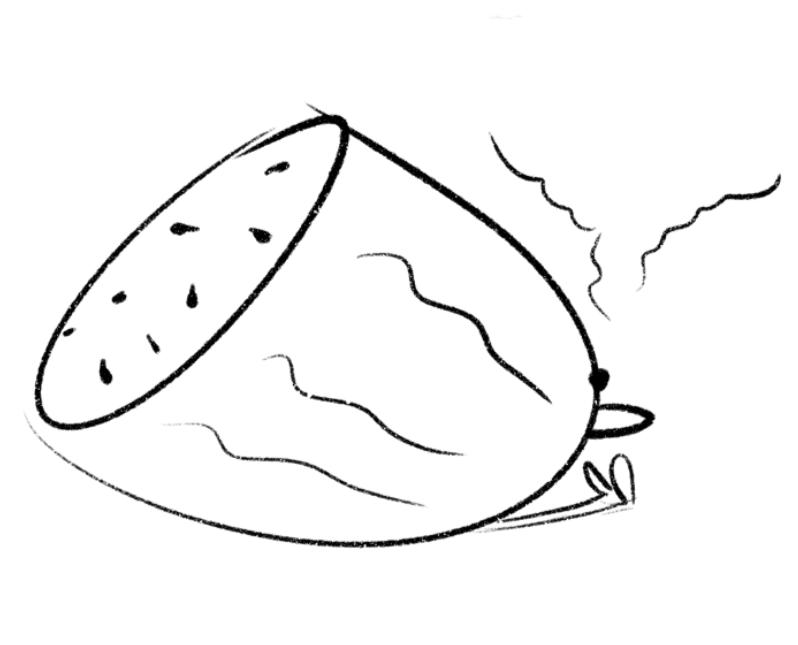
Now, you’re going to want to eat everything in sight, but do not do that. Just don’t. Eating everything and anything will taste good when you’re high, but there are many consequences that come with this. Your stomach will hate you and you will in fact regret it in the morning. To lead you in the right direction, here is the list of snacks you won’t regret eating:
1. Fresh fucking fruit
Watermelon, pineapple, a shit ton of frozen grapes, or an orange you stole from your neighbor’s tree. These are all so fresh and also healthy, so you won’t feel like a fat piece of shit after eating it.
2. Chips and dip
You can play around with this because any chip and dip will taste good. However, these are my fav combos:
• Tortilla chips with guac
• Ruffles with sour cream and onion dip
• Pita bread with hummus
• Hot Cheetos with cream cheese!!! These are literally the best stoner snack ever, sorry.
• These are not considered “chips” but veggies and ranch hit in some type of way.
3. Freshly baked cookies
Now, get these before you smoke because you will not want to get up after. Trust me, it’s worth it to get FRESHLY baked cookies. Maybe support a small business or ask for a cookie warmed up. The best kinds to eat fresh are:
• Chocolate chip
• White chocolate macadamia nuts
• Or you can say fuck it and spend a bag on The Cookie Plug.
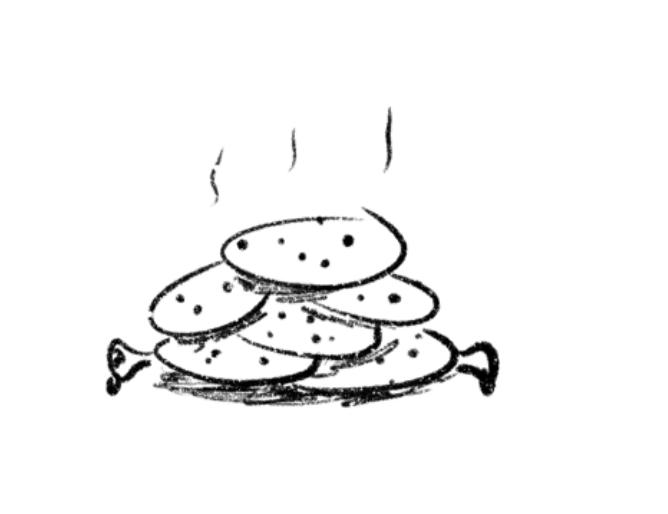
14 22 WEST MAGAZINE OPINION
If you’re tired of snacking but still hungry, real food is your best option. I mean snacks are real food too, but you know what I mean. This is more of a hassle to acquire unless you have Postmates or Doordash, but getting up is worth it (I am in no way condoning driving while high, get yourself a designated driver & stay safe lols…like PLEASE DON’T DRIVE HIGH). Some of these items are specific and some of these are just fast food places but they all hit.
1. A Fat California Burrito
Go to your local taco spot and grub.
2. Pizza
Domino’s has a $19.99 Perfect Combo Deal that has 2 medium 1 topping pizzas, garlic bread bites, cinnamon twists (includes icing), and a 2-liter soda. Just FYI.
Or you can go to Canadian Pizza. It’s on 4th and it’s the best Pizza place in LB.
3. Wingstop
You know what to get. Just don’t forget to get hella ranch.
4. Jack in the box
Munchie meals. That’s it.
5. Taco Bell
Five-dollar box. Also, get Cinnabon delights and a Baja blast freeze.
6. In-N-Out
Double- Double animal style (no tomatoes), animal style fries, and a Dr. Pepper. Now, get the pickles in your burger and put them in your animal fries. Also, chilies and like 5 spreads.
P.S. Jensen, get Protein Style and a shit ton of fries. They’re gluten-free, bae :)
7. Jersey Mikes
This is more on the heavier side but a Number 8 (club sub) Mike’s Way with salt and vinegar chips is elite.
8. All You Can Eat Sushi Pig tf out, bae.
Cottonmouth is a very real thing. Before you even start to smoke, get something to drink. You also need to have something to drink before you start chowing down, so here are the best thirst quenchers:
1. Ice cold water
Honestly, you have to have ice-cold water regardless. Like a drink and an ice-cold water. I am saying this to help you. It’ll hit like the 3 am water you chug and you will most definitely look like a hamster drinking from its cage.
2. Vitamin water
Specifically the Pomegranate Acai one. The dragonfruit one is really good too, but the Pomegranate one is just prime.
3. Mango Jumex
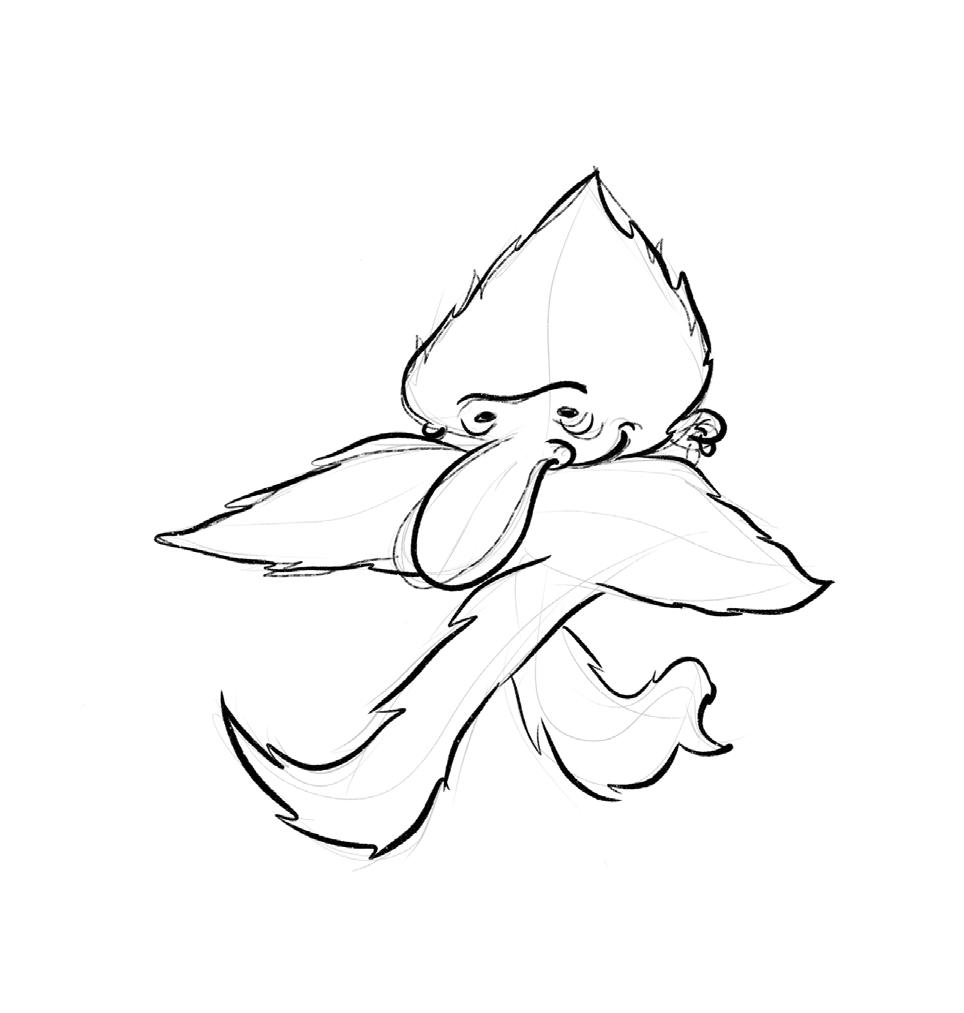
If you’re feeling a little adventurous, there are things you can do and see in Long Beach. Below are top-tier food recs and activities:
I used to be obsessed with this and the liquor store I went to always had it super cold, but I went one day and they didn’t carry it anymore. The heartbreak was uncanny.
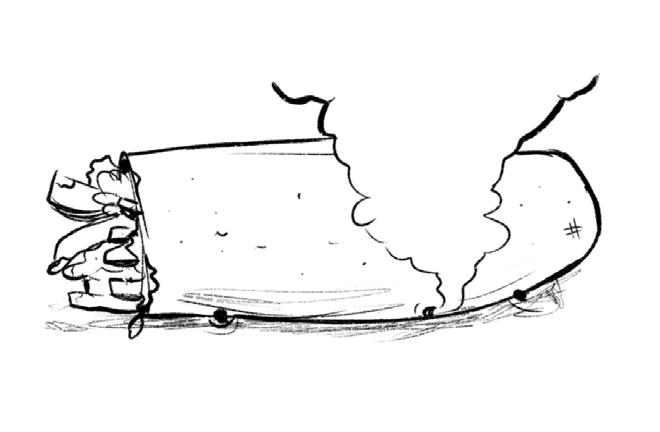
Okay, so you need something to look at. Watching something is your best option. So sit your ass down in front of a TV or set your cracked screen ass phone up and rot.
1. Nature videos
National Geographic or drone videos of beautiful scenery will transform your high.
2. South Park
Inappropriate? Maybe, but ridiculously funny.
3. Cooking competition shows
The Great British Baking Show is fire or if you want something more intense Hell’s Kitchen.
4. The Roku Loading screen IYKYK.
1. Go watch the sunset at Signal Hill. Good luck finding parking HAHA.
2. Go to the beach
Lay a blanket out, listen to reggae music, and watch the ocean.
3. Aquarium of the Pacific
Take edibles and look at jellyfish.
You hold some valuable information in your hands. Be safe, stay hydrated, and have fun, you fucking stoner.
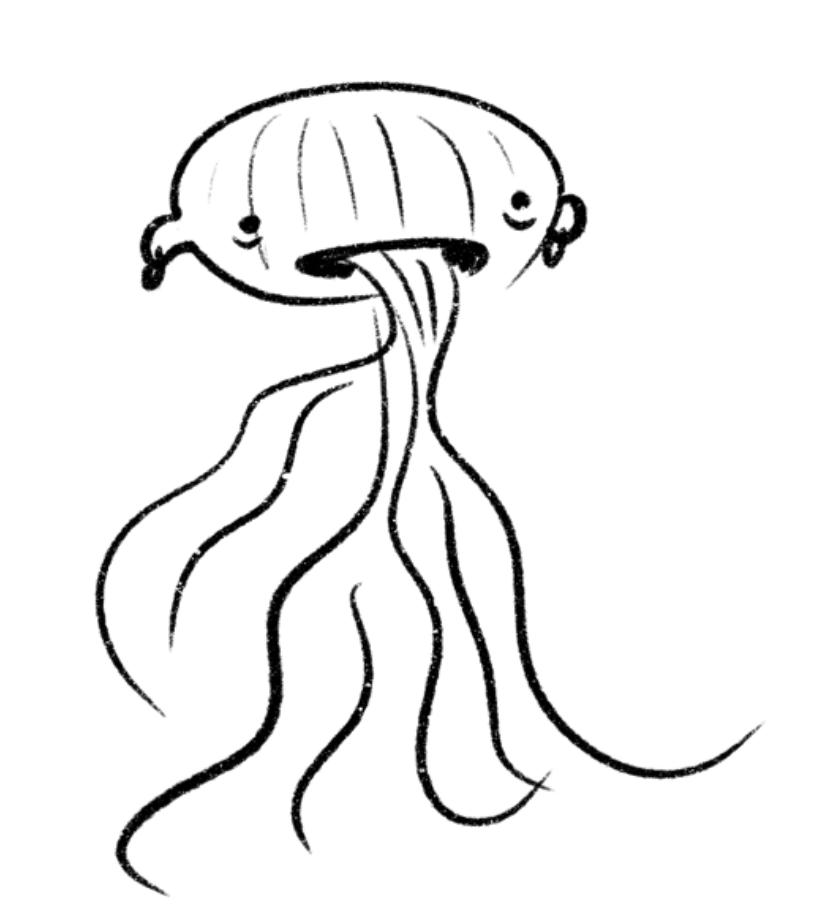
15 ENVIRONMENTAL ISSUE 90.02


16 22 WEST MAGAZINE STUDENT LIFE
MORE ABOUT THE FOREST AND LESS ABOUT THE WEBSITE, PLEASE
ILLUSTRATION BY
TULASI NAPOLITANI WRITTEN BY ALANA LOINAZ
Do you breathe? So does the Earth. The lungs of every living being are either located in or traced back to the Amazon. The rainforest is a vast and biodiverse ecosystem across nine countries: Brazil – home to more than 60% of the Amazon –, Peru, Colombia, Venezuela, Ecuador, Bolivia, Guyana, Suriname, and French Guiana – sharing the other 40%.
You’ve heard of it, haven’t you? You definitely know the importance of the Amazon in your life right now. You are aware of what humanity is doing to your lungs, your future children’s lungs, your grandkids’ lungs, and possibly your great-grandchildren’s lungs – if we even get that far. You are aware of the issues surrounding the Amazon forest, I know you are. You definitely know what is going on there as we speak. Or am I being too naive? Is it bad to assume everyone should know about what’s keeping them alive? I don’t think the American educational system would have left any environmental issues behind, would it? I would hate to believe that we all grew up in a society that does not give a shit about whatever is green unless it is a mint-flavored vape.
I am soooooo guilty. Guilty for not paying enough attention, guilty for succumbing to whatever capitalism puts in front of my eyes, guilty for not reading enough, not writing enough, not breathing enough pure air. I feel guilty for living. Living in a world where gray is green, alcohol is water, smoke is air, discrimination is a regular Monday, and corruption is law. In a test, mark “all of the above” if they ask how many of the previous issues impact the Amazon forest. A healthy human’s lungs should be no lower than 94% for oxygen levels. We can’t lose more than 6% ourselves, but we are letting the Amazon breathe with a lot less. Approximately 20% of the rainforest has been destroyed and another 6% highly degraded. All of this has happened within the last 50 years. It is naive to think we are stopping here, but also naive to think we can keep going like that if we still want to see humanity exist after you and
THE AMAZON
I are dust.
“Wow, Alana, no surprises here. We all know there’s deforestation happening.” We all for sure do, but we choose to ignore it. We don’t pressure the government to do anything about it; we just sit on our asses all day and shake our heads in disbelief. We vaguely know how harmful deforestation is, but we still choose to be ignorant because it’s easier. Hey, I get it. It’s easier to say you don’t know than to admit you do but don’t give a shit. After all, it’s not affecting you directly, right?
Wrong. It is affecting you directly. You just don’t see it quite yet. We ALL depend on the Amazon not just for food, water, wood, and medicines, but to help stabilize the climate as 150-200 billion tons of carbon are stored in the Amazon rainforest. However, we do not SEE the benefits of the rain-
“Living in a world where gray is green, alcohol is water, smoke is air, discrimination is a regular Monday, and corruption is law.”
forest. We know about them, but our brains have a hard time caring since we don’t visualize them. It is nothing we can touch or witness. By “we,” I mean Americans. I am not from the U.S., so I have been seeing it happening to people in my country a lot more than I do here. I have been noticing how the media does not seem to care as much since the rainforest is not geographically in North America. Brazil, however, is 62% Brazil and 38% Amazon. That means 38% of MY homeland is being abused. How am I supposed to sit here and not tell you about it? I am assuming you, patriotic Americans, will understand what loving your country means. So, please, hear me out for just 365 more words.
Native Brazilians are dying. D-Y-I-N-G. They live in the lungs of the Earth yet they stop breathing. Actually, let me rephrase it. They are not dying, they are being murdered. M-U-R-D-E-R-E-D. Illegal mining keeps happening in native territory, contributing to a humanity crisis indigenous people are dealing with. The Yanomami people have lost 122 of their own in less than four months last year. To address the lack of health care for indigenous people, a public health emergency was declared. Since then, emergency care has been provided in native communities. However, this is not nearly enough. Treating the consequences does not change the cause. We will hear of more and more tragedies, and that does not even include the ones that are being kept a secret. I would put money on the table that what the media shows us about the Amazon does not even begin to cover the absurdities that fully happen there. So, what now?
I am a great believer in the power of collectivism. You come second; I come second; WE come first. I don’t have a solution for us right now. No one does. No Brazilian party, no president, no protest, no activist, no one. I do, however, believe we need to change our blind love for consumption – I am 100% including myself on this. Again, I am soooo guilty. Most of us are. You might be great at being an activist and advocating for things you believe in, but I am not that good at it yet. For now, I will keep doing what my immigrant self can do: write, spread information, research, study, film, and try to create an impact on this fucked up system. Nothing will stop me from blaming capitalism for hurting 38% of my country. We all know it and we need to understand some compromises need to be made. We need to look at our own arrogance and stop defending a system so blindly that we can’t even look at what is doing to us and to our loved ones. Our generation is responsible for fixing what the previous ones did if we want the next one to exist.
17 ENVIRONMENTAL ISSUE 90.02
nature’s palette


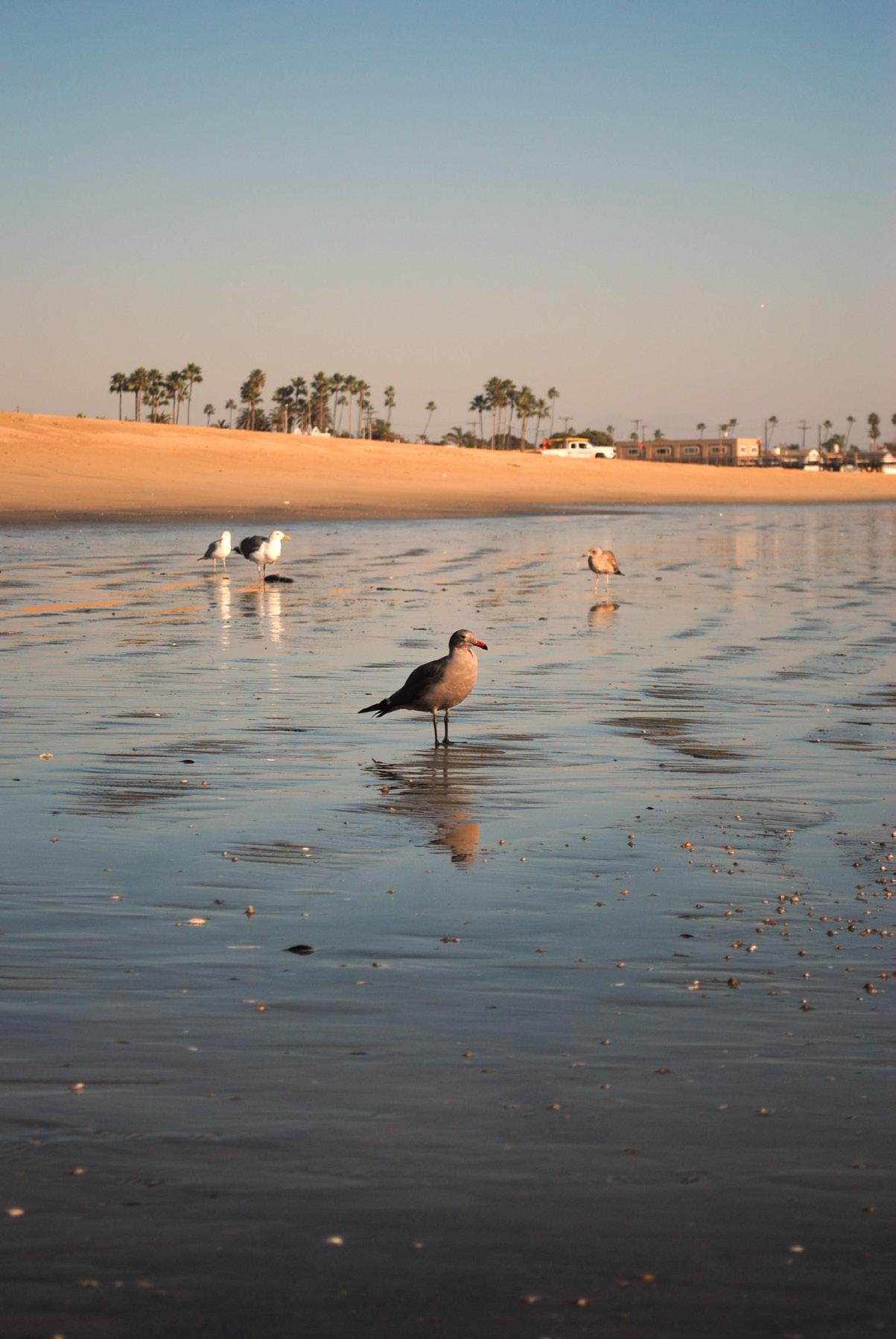


18 22 WEST MAGAZINE ART
PHOTO ESSAY BY ADRIAN CALDERON


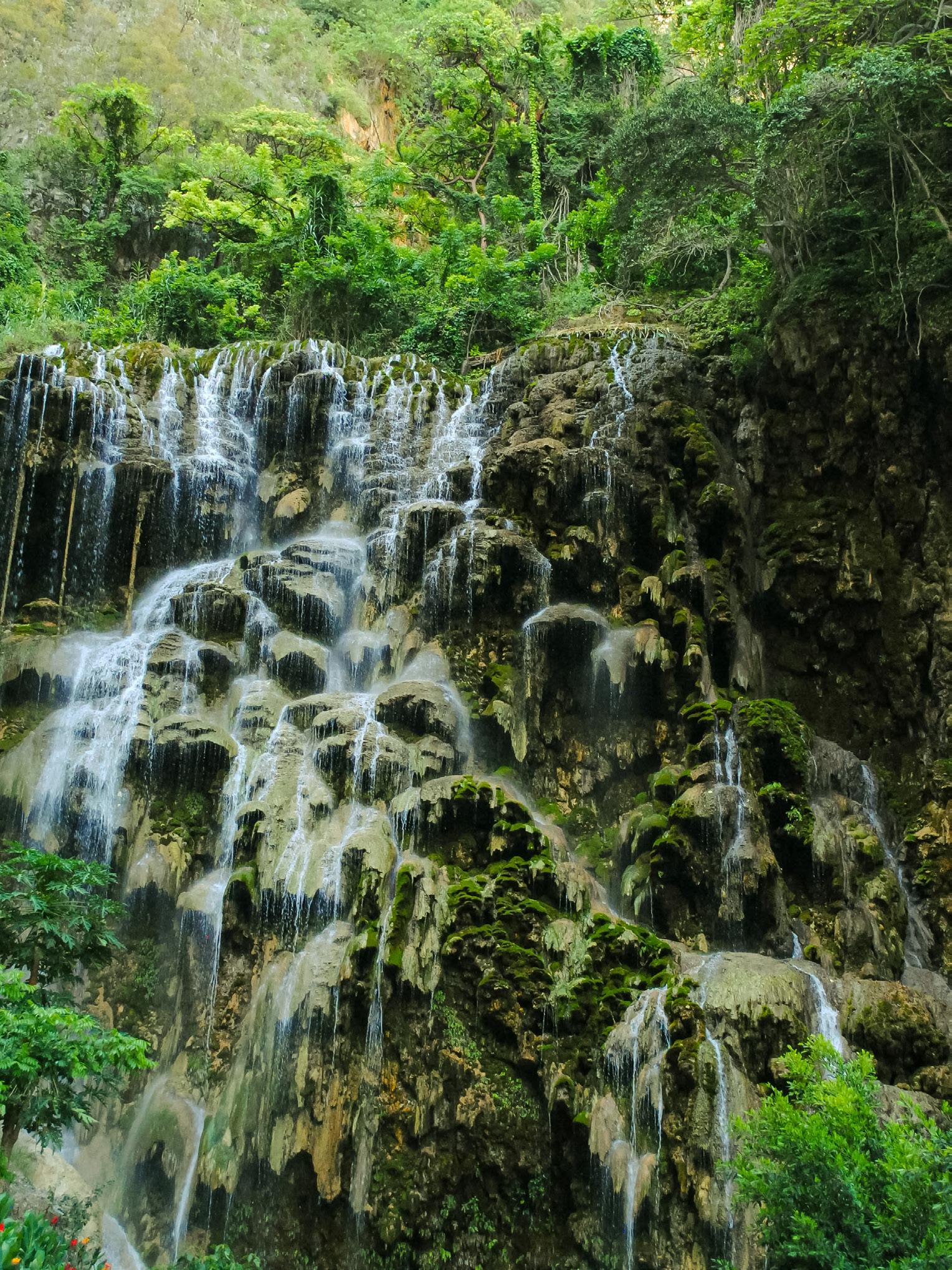

19 ENVIRONMENTAL ISSUE 90.02





20 22 WEST MAGAZINE ART


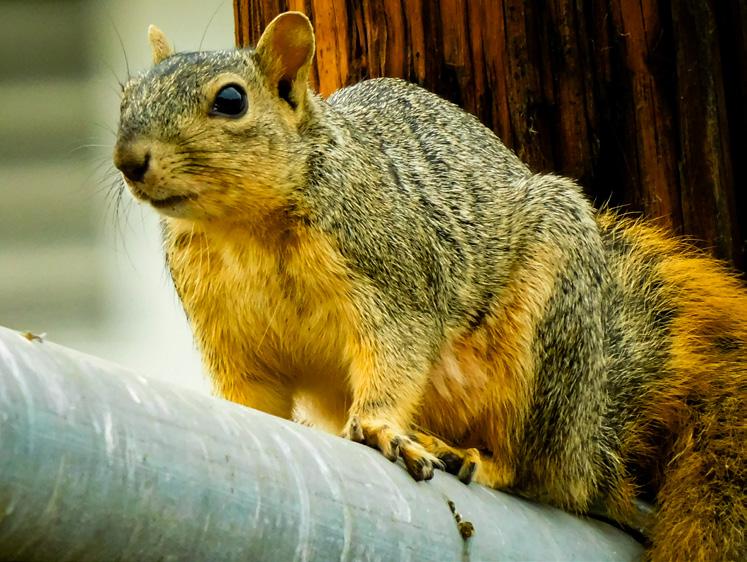




21 ENVIRONMENTAL ISSUE 90.02

22 22 WEST MAGAZINE ART
WRITTEN BY J. QUINZELLE
in a plastick bot(message)tle screams! so LOUD br eak ing down into diss-ease
in a plastick bot(message)tle screams! so LOUD br eak ing down into diss-ease
it’s harBINGEr
it’s harBINGEr
it’s WARning
it’s KILLotons
it’s WARning it’s KILLotons
it’s blo(in our)od
it’s blo(in our)od
ruuuuuning with the herdherdherd diving into the endlesssss abyss it will looooong be there it will not be missed
ruuuuuning with the herdherdherd diving into the endlesssss abyss it will looooong be there it will not be missed
they -^-toss-^- the baby with they bre(ath)ed the toxin mix we are to cope we are its pope they will incyst we will breathe. we will drink. we will eat.
they -^-toss-^- the baby with they bre(ath)ed the toxin mix we are to cope we are its pope they will incyst we will breathe. we will drink. we will eat.
it will aaccccuummuullaattee.
it will aaccccuummuullaattee.
it’s hereal to us.
it’s hereal to us.
what evil are you really helper?
what evil are you really helper?
i thought you were our friend? why must we ail by our hand?
i thought you were our friend? why must we ail by our hand?
it’s dearth to come.
it’s dearth to come.
in a plastick crysis gaia suffercates the sinthetics into her art aeries the poise on we create when is late too late?
in a plastick crysis gaia suffercates the sinthetics into her art aeries the poise on we create when is late too late?
ILLUSTRATION BY PANHAVATEY BUN
microplastics
23 ENVIRONMENTAL ISSUE 90.02
I’ve been told that when one wishes hard enough, a wish can come true. That is how I came into being; at least that’s what my father tells me. My mother wished for a child of her own under the smogged skies. Nine months later, they welcomed their first and only child, a boy—me.
“Gaia,” my mother said as she held me in her arms, “his name is Gaia.” An hour later, we were rushing home. Dad and mom, with me wrapped up in my mother’s arms, ran home under the acidic rain as the green skies lit up with shocking lightning hitting the charred homes.
When we got home to our one-room pod, my father lit up a candle and sat next to my mother as they looked out of our small round window—looking out into the dark purple smog that overtook the hills full of hope.
I blow out my candles as I sit in the same spot with my dad 16 years later, and we look out the same window. It’s dark out, and the only thing we can hear is the hail that pushes against the roof of our pod.
“What did you wish for?” Dad asks.
“Still deciding,” I smile.
“Hang tight. I’ve got one more thing,” dad scurries away.
I lied to my dad; I actually knew what I had wished for already. I wished to see the stars. I had seen old images of skies full of lights and read poems of people who could gaze into the night with no oxygen mask in sight. No timer telling them when to go back inside. I read a love poem of someone who used to talk to a bright object in the sky called the moon, and I think I dreamt of it once too.
My dad comes back with a green box sealed with tape.
“I promised Mom that for your 16th birthday, I would get you one,” he says as he hands me the box.
My hands begin to get clammy like they always do. I’m scared to open it, but I can see my father’s excitement with each flicker of candlelight. I rip the top of the box slowly and reach in. I feel a sticky cool texture caress my skin. I drop the box as I lift it up.
“DAD!”
“The man who sold me suggested we don’t tell anyone,” he said.
I bring it closer to my face. It’s green, it’s alive, it’s a plant, with sturdy stems that are smooth and rough at its ridges.
I sit in awe as I look at every single leaf and feel the dampness that lives on its surface.
I go up to dad and squeeze him with a hug, and I can feel his bony body hug me back.
“Don’t stay up too late,” says my dad as he walks out.
I study the plant until the candles go out. I can no longer see it, but I feel the coolness of the living plant on my skin.
How I wish I could see the world before the collapse.
If you wish for something hard enough, it can come true…
I quickly stand up, feeling my way around the darkness until I reach my desk. I grab the flashlight that says “only for emergencies.” I power it on, using the last of its juice, to grab a paper and pen. Holding the flashlight, I begin to write.
Dear people of the past,
I write to you in the middle of the night, hoping and wishing that this letter gets to you in time. I wonder if you ever cared about the world that comes after your time on Earth. I would say you never did, because if so, then I would not have to watch the world from a place of darkness barely dim. Eight hours a day is what the regular individual gets to spend outside before our oxygen bank runs out and tanks. Of course, those who live in the floating cities get an unlimited hoard of oxygen galore as they study the fallen skies and their lore. Down here we are stuck eating pouches of mousse that just fill our stomachs with enough not to lose our minds. We have to cover ourselves anytime we step into the storm full of wrath that bleeds past our clothing, causing a brittle rash.
In the past, you had nature, beauty, and all. I’ve seen it in old pictures in the books that lay on the ground across the school halls. Places where clear blue water met with the sand. Beaches, they called them, where people could lie under a blue sky. I’ve heard of places with plants so tall... trees, they called them, with little creatures who lived on them. Creatures that crawled on the floor, creating burrows for their newborns. Creatures flying through the air, creating something called nests—something so sophisticated yet a home. I’ve heard of a hobby called star gazing where people sit watching the sky full of a hundred billion lights. I’ve heard of people dancing and singing in the rain, not scared of the poison that causes pain. Cool crystals that fell from the sky – snow it was called.
But I also saw all the things you all did. You lit up the planet until it could no longer bear. Hills on fire destroying creatures and their dens. Starved nature of the peace it deserved. Showered the ground with chemicals that burn. Starved the ocean of salt and replaced it with oil left to malt. Blew up homes, creating uninhabitable zones. Radiation that leers for years into the future.
So, I am writing to you. Can you stop it before the world collapses on us all?
24 22 WEST MAGAZINE ART

25 ENVIRONMENTAL ISSUE 90.02
PHOTO BY CAROLINE BAE WRITTEN BY ERIC CEJA RUIZ gaia’s letter
a mother’s love
WRITTEN BY DARYA JAFARINEJAD
ILLUSTRATION
BY
SERENA LOGAN
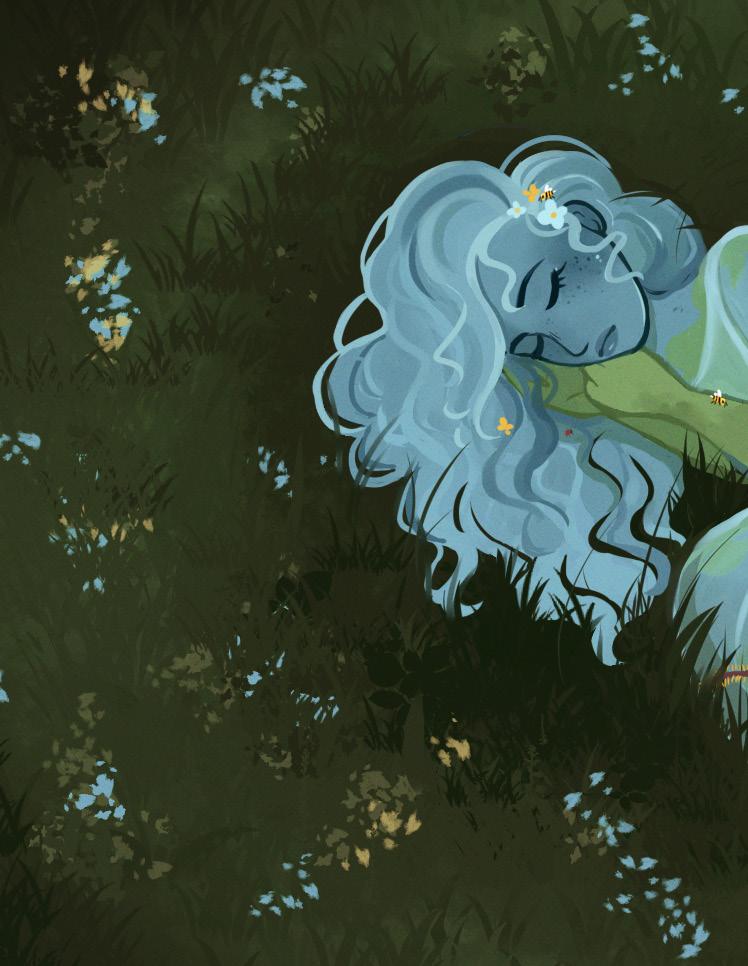
I had a nightmare last night.
I saw my mother Swathed in an astonishing dress of cerulean blue, forest green, and mahogany. She was alive,
With all the grace and beauty of a thousand doves flying all at once.
Tired, she laid down to rest.
As she lay, colonies of ladybugs, caterpillars, fireflies, and more nested upon her.
She loved them dearly, Providing them the flesh of her body for nourishment.
But the insects, They were so Hungry.
So, so Hungry.
I saw my mother dissected, Her organs on full display.
Rivers of blood ran down what remained of her torso. Her wild, luscious hair had been shaved off. Her bones now strong as glass under the machines drilling into her.
What they wanted took a thousand names. With each titular transformation, so too they evolved their methods of torture.
Oh, how they ripped open her skin; How they slashed through her bones and organs, Burying themselves inside;
How they captured her blood to power their wasteful lives; How they chopped down thousands of acres of her hair.
26 22 WEST MAGAZINE ART

They extracted every last inch of her beauty— Of her essence—
And consumed it ravenously.
It seemed no matter how much she surrendered, Or how much they robbed, It was never enough.
The less of her there was to abuse,
The more those insects turned on themselves.
They waged wars, manufacturing battlefields on the paradise of her body,
Corrupting Eden with the venom of conquerors.
Where once she was an endless garden, All that remained were valleys of rot and decay.
I miss the aromas of innocence and endearment—of youth and beauty.
My nose is deteriorating from the stench of Blood and disease.
My skin peels off the closer I approach her radioactive aura.
Poor Mother.
How could she have known
When those insects emerged from their chrysalis, It was not butterflies that sprung, But parasites?
Millions and millions of Parasites.
They slaughtered her in broad daylight, Announcing they have tamed the untameable; The wild woman who needed to be domesticated.
They have not just murdered her;
Next to her tomb, their future is also buried.
She was alive.
Once upon a time, that is.
She is a myth now. A bedtime story told to children in gas masks.
Goodnight Mother.
I hope your dreams are as sweet as the fruits you once bore. You will never wake again from your dreams, And I fear I will never wake from this nightmare.
27 ENVIRONMENT ISSUE 90.02

@22WestLB















































